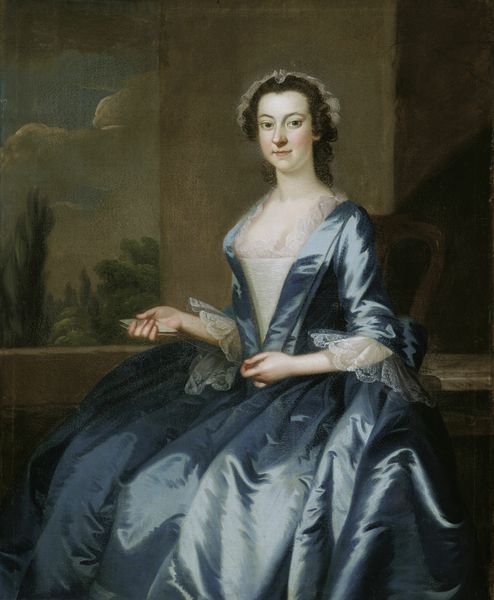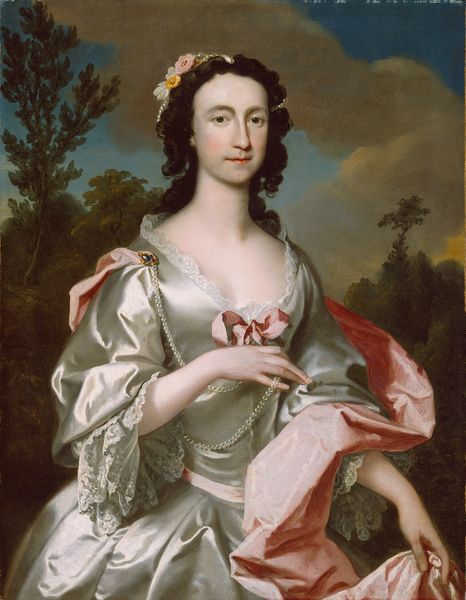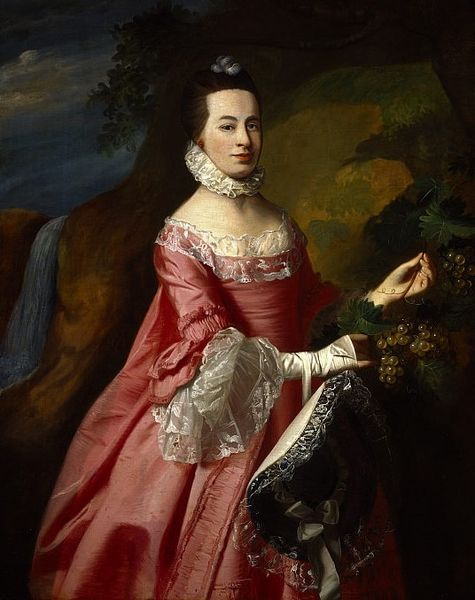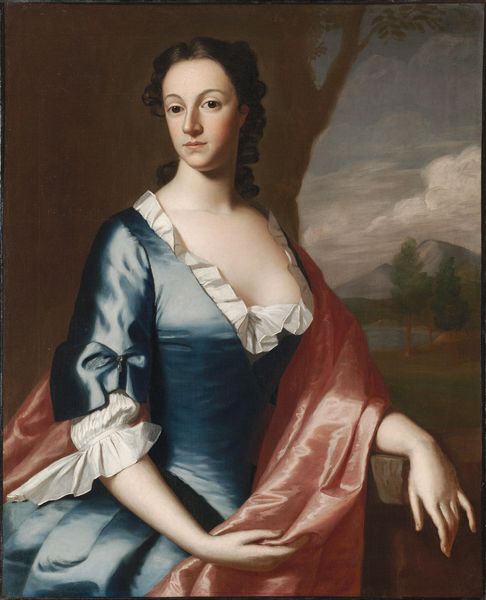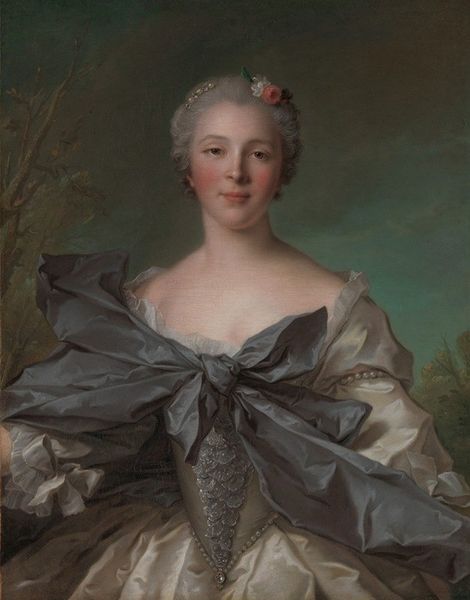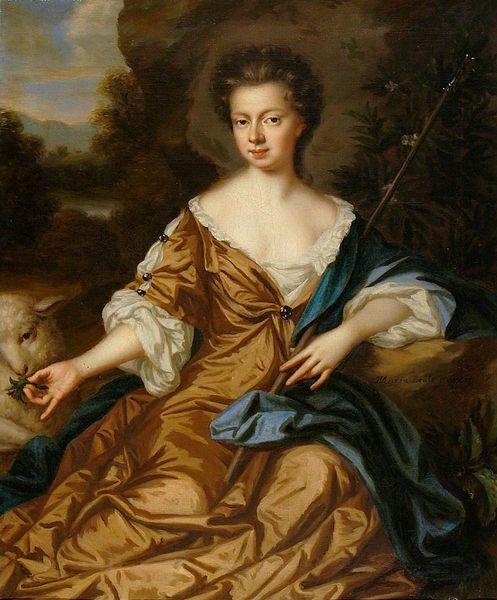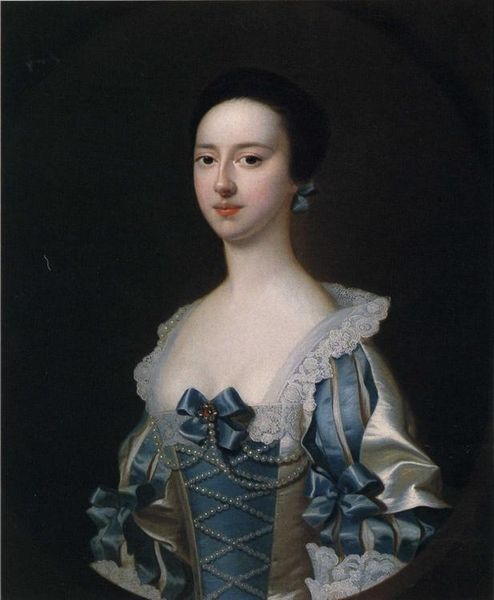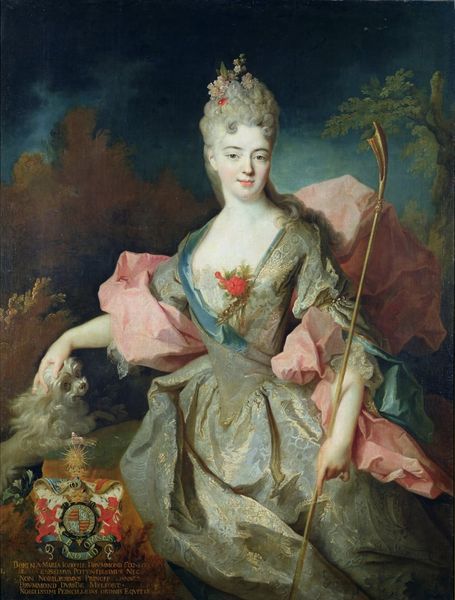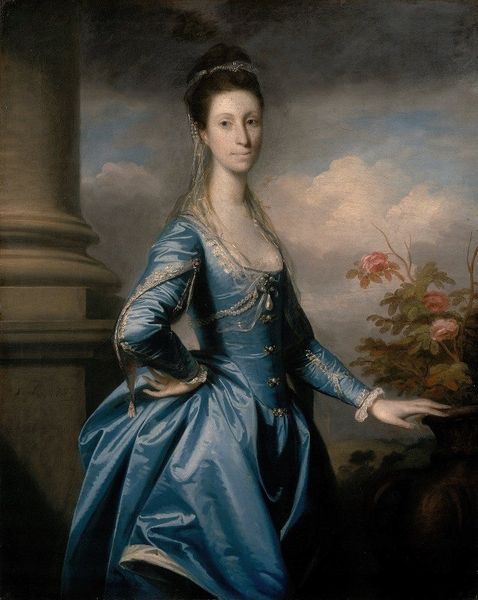
Dimensions: 127 x 102.24 cm
Copyright: Public domain
Curator: John Singleton Copley painted "Ann Tyng" in 1756. Editor: My immediate thought is of theatricality. There is something studied about her pose, like a figure in a play. And that silk, how much must it have cost and how did Copley render the light so carefully? Curator: Exactly! Note the cascade of satin, almost liquid. Copley has meticulously depicted the folds, highlighting its opulence, a clear indicator of Ann Tyng’s social standing. This painting masterfully captures the status of its sitter, framed within a broader historical narrative. Editor: True. And that status wasn't achieved through embroidery but on enslaved people to make possible the mercantile empire. The satin comes from global networks of production, rooted in raw materials sourced using unpaid labor, making the cost of her clothes both economic and ethical. Think of all of that held in one bolt of cloth. Curator: That sheen indeed speaks to vast networks, although here, Copley presents an ideal. Notice how the landscape blurs, subordinate to the subject. All elements of composition are in service of presenting a specific image of Ann Tyng—refined, composed, almost goddess-like, and she is elevated into this status. Editor: What also intrigues me is the inclusion of the lamb and staff. I mean, a prop for this depiction is one thing but look how gently she feeds the little guy. You mentioned that satin speaking to Tyng's wealth, well I cannot ignore what animal material like that fleece had as currency on both sides of the Atlantic ocean, even if she looks delicate herself. I wonder, would an agricultural person then, from colonial New England see irony in Copley's work? Curator: Possibly. One reads symbolism in classical terms, as if extracted from ancient myths of pastoral simplicity. From this lens, there is some artifice, a construction designed to portray not literal truth, but idealized virtue and affluence. Editor: I think you put your finger on that sense of fabrication that came to me initially, although knowing a little about all of that fine detail--the weaving of this historical context--adds a fascinating complexity, that’s a result of materiality not style. Curator: A fine point, perhaps inviting one to consider artifice alongside truth, status, and subject matter—a very Copley-esque duality. Editor: Absolutely, that helps clarify what to think about when one engages not just with the final result but also with its origin, in "Ann Tyng," particularly.
Comments
No comments
Be the first to comment and join the conversation on the ultimate creative platform.

